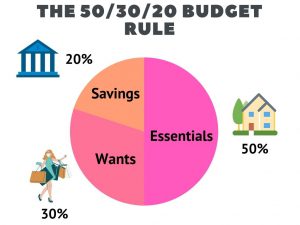This time of year looks different for everyone: we all have different holidays we celebrate, different traditions, and different types of families – and that’s great! That’s what makes our lives unique and keeps the world interesting. But as you get older, things might seem a little, well, different in a bad way as the end of the year approaches. You might even find yourself wondering where all the joy went, and when it got replaced by things like stress or sadness. And we get it: life changes, and things might not be the same as they were in the past, but that doesn’t mean that there aren’t still reasons to celebrate. You just have to remember that it’s ok to find enjoyment in the way things are now, and that you can find new ways to celebrate. It might just be a matter of knowing what is triggering your negative feelings, and having ways to cope as seasonal stress approaches.
Start with the Source and Be Proactive

First things first: before we start talking about all of those external sources of stress that surround this time of year, let’s start with why you might feel like the joy has been sucked out of this time of year, or why it just doesn’t feel right to you anymore. The root of this might just be all the changes that come with aging: children grow up and move away, some split holidays with in-laws; friends might also move or their health status might change, making them less likely to celebrate with you.
If all of this seems overwhelming, and you find yourself wishing for the good old days, the first thing you need to do is try to be open to change. Embrace what is different in your life, and find new traditions that can accommodate everyone, and make you happy, as well. For example, if the time that you have with your loved ones has shifted, consider trying things like:
- Getting creative – Why not create your own holiday, one that is unique – and therefore special – to your own immediate family? It could be the day before or the day after an important holiday, or it could always be the Saturday before, or whenever feels right to you. You can keep your old traditions alive, just move them to a new date!
- Going digital – If you can’t travel to be with loved ones, or if they’re spending a special day elsewhere, consider setting up a Zoom meeting, or scheduling a video chat so you can be together virtually.
- Celebrating with yourself – If you find that there are times when you’re going to be on your own, think about other ways you can enjoy the season. Why not volunteer, connect with friends, or even treat yourself to a fancy dinner and a movie? You might discover a new holiday tradition that gives you joy just for you!
But what if the change in your life is something harder to replace by switching around schedules or making a virtual date? The loss of a loved one, whether it happened recently or years ago, can bring up intense feelings at this time of year, feelings of grief, loneliness, emptiness, and even guilt if you find yourself enjoying yourself. All of this is totally normal, but it is important to find ways to get through it in a way that feels best to you. Think about how you want to handle the situation, and talk to your loved ones about your wishes. Remember that it can be just as painful to have your loved ones avoid mentioning a deceased partner or other family member as it is to bring them up, so you might want to be proactive and come up with way ways to honor the dead, including perhaps:
- Having a picture of your loved one in a prominent place
- Making a photo album of previous holidays and sharing it, so you can focus on positive memories
- Setting aside a time for everyone to share memories and funny stories about your deceased loved one
- Making a toast to the departed
- Volunteering or donating in their name to honor something that was important to them
- Continuing traditions that were important to them
Remember, you’re allowed to be sad, even during the holidays! Whatever you’re feeling, embrace it, share it, and find ways to enjoy life and the company of those who can be with you.
Protect Your Time and Deal with the “Too Much To Do” Problem
Loneliness can be a source of stress at the holidays, but so can not having a moment to yourself! You might have lots of visitors, or feel pressured to continue holiday traditions exactly how they have always been, and things like decorating, cooking meals, and shopping can all add up and become overwhelming. Get things under control, and keep the stress to a minimum by trying things like:
- Holding onto your routine – Your routine matters, and you should make sure to communicate that to your loved ones. Tell them (and remind yourself!) that you would like to maintain a schedule for meals, rest time, and anything else that’s important to you.
- Focusing on you – It’s important to focus on your needs, not on the expectations others have of you.
- Prioritizing tasks – You might find that you need to downsize a bit to keep your sanity at this time of year. Decide which decorations are most important to you- don’t feel like you need to be outside on a ladder hanging lights on every inch of your roof, for example! The same applies for dinners and gifts: stick to two or three favorites dishes, or consider starting a potluck tradition, and talk to your family about starting a secret Santa or other type of gifting arrangement.
- Accepting help – In the same vein of remembering that you don’t have to do it all, you also need to remember that it’s ok to accept help when it’s offered. In fact, if you’re feeling overwhelmed, be proactive and tell friends and family that you need help: ask others if they want to host, or if they want to bring something, or help decorate. They’ll feel needed and included, and you’ll get a much needed break!
- Making sure “no” is in your vocabulary – Don’t ever feel obligated to join in with everything if you’re feeling overwhelmed. Your loved ones will understand, and you’ll enjoy the time you do spend with them all the more.
Figure Out Your Finances
A third major source of stress at this time of year can be the hit to your wallet from presents, parties, dinners, travel, and the like. If you’re living on a fixed income, and are feeling the pinch from the holidays and extra winter expenses like heating, the best thing to do is to sit down and face this issue head on. Try the following to cope with any financial stress that comes up at this time of year:
- Set a budget for holiday spending – Sit down and really work out what is realistic for you to spend this year, taking account of everything including gifts, food, decorations, travel, cards and postage, and anything else that comes up. You might want to embed the cost of this season into your annual budget, setting aside a little of either your “fun” money, or your money that goes into savings and paying down debts.
- Use cash wherever possible – It’s much easier to keep track of your spending – and a lot harder to go crazy! – when it’s cash coming out of your wallet rather than clicking “buy” with your credit card.

- Be creative with gift giving – If you exchange gifts, talk with your family about setting up something more fun and frugal this year, like a secret Santa or white elephant party. You can also think outside the box when it comes to what you give! Consider making something, baking something, thrifting something, or offering your time (hint: babysitting is always much appreciated!) as an alternative to an expensive, store-bought gift.
Talk About It, and Get Help When Necessary
Finally, remember that all of the above can often become too much, and depression can easily begin to set it. Take good care of yourself, first by eating right, getting exercise, and trying not to overindulge too much on eating – and especially drinking. Just as important, though, is reaching out to loved ones, or finding some sort of support, so you can talk about what you’re going through, and put yourself in the right frame of mind to reflect positively on what the holidays mean to you now. They might be different from what they once were, but you can still find the good in the season, and celebrate what has passed, what you have now, and what is still to come. Wishing you all the best for this holiday season!



















